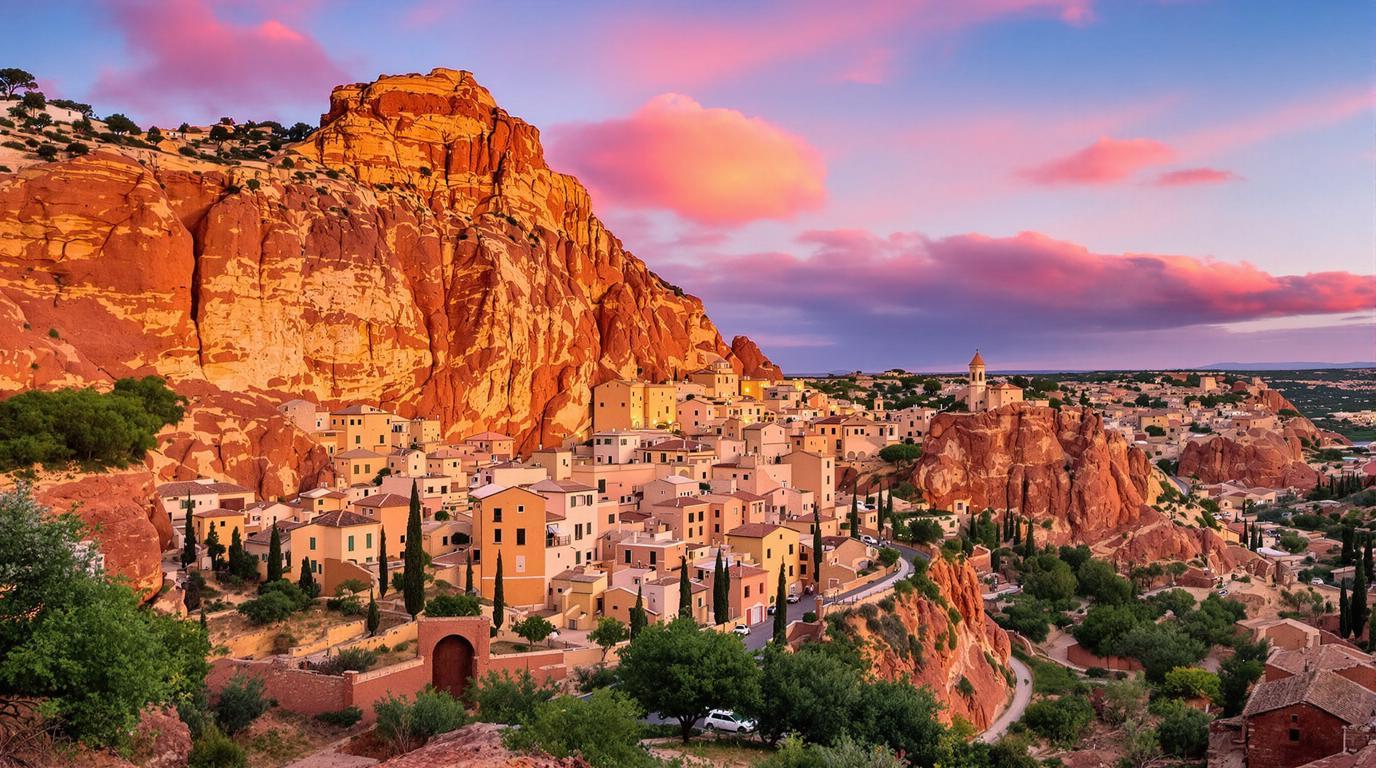Roussillon’s ochre cliffs seem to burst from the earth like flames frozen in time, creating what might be France’s most vividly colored village. This Provençal gem isn’t painted—it’s literally made from the vibrant soil beneath it. Unlike typical French villages with their cream-colored stone, Roussillon wears a natural palette ranging from soft yellow to deep crimson that shifts dramatically with the changing light.
The scientific wonder behind the color explosion
What makes Roussillon distinct isn’t artistic whimsy but geology. These stunning hues come from iron oxide deposits formed over 110 million years ago when the region lay underwater. The ochre contains up to 80% pure pigment—one reason artists have been drawn here for centuries.
As local geologist Marie Durand explains:
“What you’re seeing isn’t just beautiful—it’s ancient seabed transformed by time and pressure. The intensity of color directly correlates to the iron oxide concentration.”
Walking through a painter’s palette
The Sentier des Ocres (Ochre Trail) offers the most immersive experience of this natural phenomenon. The 30-minute loop winds through former quarries where soaring cliffs create a natural amphitheater of color. Walking these paths feels like stepping inside a Van Gogh painting—surreal yet perfectly natural.
Wear dark clothing—the ochre dust stains almost everything it touches. The €3.50 entrance fee supports conservation efforts that protect this fragile ecosystem from the million-plus visitors it receives annually.
A village built from living color
Beyond the trail, the village itself is a masterpiece. Buildings constructed from local materials showcase every shade in the ochre spectrum. Narrow streets wind upward to Place de la Mairie, where cafés offer perfect vantage points to absorb the scene while sipping regional rosé.
The homes weren’t painted for tourism—this was practical construction using available materials. Just as medieval Italian hilltop towns built defensive walls, Roussillon’s inhabitants simply used what the earth provided.
The preservation of ancient craft
At the Conservatoire des Ocres et de la Couleur, housed in a former ochre factory, visitors witness how these pigments transformed from raw earth to the paints that colored everything from cave art to Renaissance masterpieces.
Master pigment maker Jean Desormeaux demonstrates traditional techniques:
“Before synthetic dyes, ochre was among our most precious commodities. The methods we preserve here haven’t changed in centuries. This knowledge connects us directly to our ancestors.”
Beyond the tourist trail
While most visitors cluster around the main square and ochre trail, savvy travelers head to Belvedere Basso viewpoint for breathtaking panoramas that reveal how the village seamlessly blends with its surroundings. Like certain untouched Irish islands, some corners of Roussillon remain refreshingly authentic.
Eglise Saint Michel, perched at the village’s highest point, offers another excellent vantage point. Its 19th-century bell tower stands sentinel over terracotta rooftops that echo the earth tones below.
Artisanal treasures
Ocres Choses, a family-run boutique, sells natural pigments harvested and processed locally. Unlike mass-produced souvenirs found elsewhere in Provence, these authentic ochre products connect directly to the landscape. Artists worldwide seek these pigments for their unmatched luminosity and permanence.
Much like certain Portuguese monasteries tell the story of their nation, these humble pigments reveal Provence’s artistic heritage.
When to experience the magic
Visit during golden hour—just after sunrise or before sunset—when the ochre facades seem to glow from within. Spring brings wildflowers that create stunning contrasts against the red cliffs, while fall offers comfortable temperatures and fewer crowds.
Local photographer Pierre Laurent advises:
“Come in late September when the tourist buses have gone. The light is extraordinary then—softer, more contemplative. You’ll see why Cézanne was so captivated by Provence.”
In Roussillon, nature’s palette has created something that feels both ancient and otherworldly—a living canvas that changes with each passing cloud. Walking these colorful streets, you realize some places don’t need to be discovered like remote islands with emperor penguins; they simply need to be experienced with open eyes.
